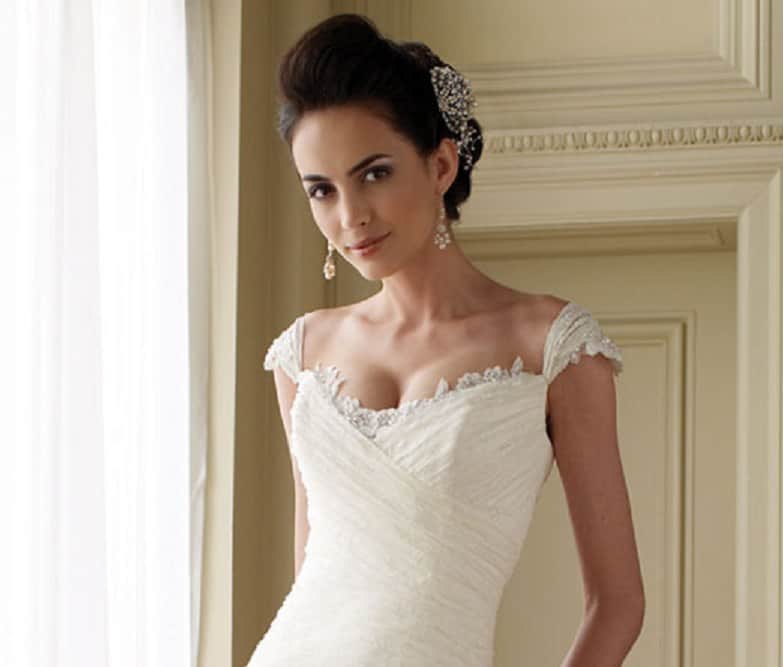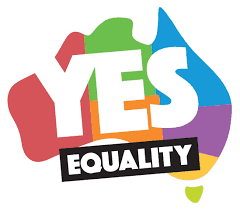Veil Heaven: Profiles of All Styles Imaginable
It doesn’t matter how traditional or trendy you are, nothing else says I am the bride quite like your veil. We know that there are countless options, and that picking the perfect one can feel like a daunting task, and that’s why we’ve created a basic veil guide.
(Courtesy claytonaustinlovestories.com)
Veils come in a huge range of styles and lengths, but the one you choose is dictated by the dress you’re wearing, the formality of your day and even your hairstyle. A longer veil is seen as more formal and it keeps with tradition, while a shorter veil is a fresher look and shows off your personality.
Veil Types By Length
Blusher
This short, sheer veil is worn over the face, and it extends to just below the chin. If you’ve always wanted the big “reveal” tradition – where your veil is lifted up over your head – then you’ll want a blusher. It can be worn alone, but it’s normally coupled with one of the veils below to create a double-tier effect.
(Courtesy etsy.com)
Birdcage
This is the shortest of the veils and it barely covers your face. There are different styles of wearing it: the netting can cover the entire head, just over the eyes, or extend past your chin. It’s a popular and perfect choice for brides wearing a vintage dress.
(Courtesy etsy.com)
Flyaway or Shoulder Length
This floaty veil is a fairly modern style, and it’s best suited to a daytime wedding. It’s a layered, short veil that sits just below the shoulders, which means the detail on the back of your dress, or on your bust, won’t be hidden. Use a blusher if you want to create a fuller look.
(Courtesy colincowiewedings.com)
Elbow or Waist Length
As the name suggests, it’s a style that comes down to your elbows, so it doesn’t obscure the skirt part of your wedding gown. It’s a simple, sweet veil that’s usually worn during the day, but it’s not out of place at a more formal wedding. This romantic veil works with most dresses and is a good choice for shorter brides.
(Courtesy percyhandmade.com)
Fingertip or Hip
When you rest your arms at your sides, you should be able to touch the end of the fabric with your fingertips. It’s one of the most versatile and loved styles, because it’s so flattering for brides, and it suits most wedding dresses. This classic veil is more on the formal side, and it’s frequently embellished. It’s also a great choice for taller brides.
(Courtesy avesphotographicdesign.com)
Waltz or Ballet
Do you have visions of your new husband tripping over your veil, when you’re supposed to be showing off your exceptional first dance moves? Fear not, the veil you need is the waltz. Its length falls somewhere between your knees and ankles, which means that it still ticks the box for long and elegant, but there’s no chance of it getting caught underfoot. It leans more towards the formal side of the veil category, but it certainly wouldn’t be out of place at a more casual celebration.
(Courtesy blossomveils.com)
Chapel
This veil style reaches the floor, and customarily extends beyond the hem of your dress, so it forms a small puddle of fabric. It’s a romantic option, which also makes it a common choice, but because of its length, it’s generally worn to more prim and proper weddings.
(Courtesy www.weddingchicks.com)
Cathedral
Wearing a cathedral-length veil will make any bride feel like royalty. It’s a very long veil that extends a few feet past the end of your wedding gown. It’s the most formal and dramatic style, and it’s meant to be worn with a full gown. It’s a majestic veil, but it’s not low maintenance, and you’ll need to pay your maid of honour overtime for keeping it picture perfect.
(Courtesy etsy.com)
Royal
This veil really is the one fit for a queen – think Lady Di getting married in St Paul’s Cathedral – and it’s the most formal and regal style. It’s not often chosen by brides because it’s impractical, and costly, but if you have your heart set on it, please get married in a castle to match this grandiose veil.
The image below is an easy guide to classic veils, but remember that veil lengths will differ depending where you attach it to your head. It can be secured on top of your head, at the back above your bun, or at the back below your bun. When you choose a veil, be sure to get it measured professionally.
(Courtesy birdalguide.com)
A Veil Less Ordinary
Juliet Cap
For the lover of all things antique, this veil is the perfect accessory to your vintage wedding dress. It’s a small fitted cap, typically made from lace or ribbon, and it’s normally gathered at the side of the head, but can be held at the back. To add to the romance it’s decorated with pearls, beads, jewels or flowers, and it can be worn alone or as part of a longer veil.
(Courtesy etsy.com)
Pouf
The name says it all! This very short, very dramatic veil is certainly not for everyone. The length is just above the shoulders, and the tulle is gathered and attached to a comb or hairpiece, for extra height and volume. Because it brings its own personality to your wedding, you should combine it with a simple gown.
(Courtesy bridebird.com)
Wrap
This unusual veil is one for the fashion-forward bride. The veil is knotted at the nape, for a uniquely modern twist on a vintage veil.
(Courtesy martiandcompany.blogspot.com)
Headband
This simple but effective veil is a modern take on the Juliet cap. It can be embellished and it’s either knotted under the ear – with the veil hanging over the shoulder – or at the back of your neck.
(Courtesy greenweddingshoes.com)
Mantilla
This Spanish-inspired accessory is definitely one of the most romantic options. It’s commonly made from lace, and is characterised by an intricate lace or embroidery edge. It’s worn without a headpiece, and instead gracefully drapes over the top of the head, and it falls over the shoulders. It can vary in length, from the elbow to the knee.
(Courtesy snippetandink.com)
Tiers
Veils can have one, two or three different tiers, which all help to give you volume. If you choose to have two or three tiers, then the top tier is the blusher, which is worn over the face. The tiers are typically different lengths, and they’re generally removable, so you can have a long, formal veil for your ceremony, and take off the bottom tier for a shorter reception veil.
(Courtesy youmbo.com)
Cuts
Your head might be swimming with all your veil options, but your choices don’t end there, as you also have to select your cut.
– Standard – it’s a rectangle of fabric that’s had the corners rounded. It can either be a one-tier veil or folded into two tiers.
– Angel or cascade – this is a popular choice as it frames the face and then cascades down. It’s often made from a few tiers.
– Circular – this big circle of fabric is gathered in the middle and folded to form the veil, which automatically makes it two tier. The bigger the circle the longer the veil.
– Drop – it’s also a big circle of fabric but it isn’t gathered or pleated. One end is fixed to a comb, and the rest falls over your shoulders and back.
– Oval – this unique cut is for the mantilla veil, so it’s the perfect scarf shape. It’s only one tier and it’s attached to the top of your head.
– Bubble – this voluminous veil needs to be made from a structured fabric, such as netting or tulle, so it keeps its shape.
Edgings and Embellishments
You can opt for a plain veil, or use crystals, pearls, rhinestones or beading to adorn the entire veil, or just the edges. These accents need to enhance your dress, and must reflect your personality and style.
– Cut edge – this looks like it has no finish, but because it’s simple, classic and clean, it’s the most conventional cut.
– Pencil or rolled edge – this is the thinnest of the edges and it offers the bride subtle definition on her veil.
– Ribbon edge – satin ribbon is a standard finish and it’s available in any width. It’s a classic style that makes the veil stand out.
– Lace edge – this is typical of the mantilla style, but it also creates a particularly vintage feel.
– Crystals, pearls, rhinestones – these are luxurious edges for your veil, but they can also make it heavy, which changes how it falls.
There’s plenty of etiquette about what veil you should wear, but as you make up the rules on your wedding day, it’s really up to you. You’ll know you’ve made the right choice when your veil gets pinned onto your hair, and you feel like the perfect bride.






